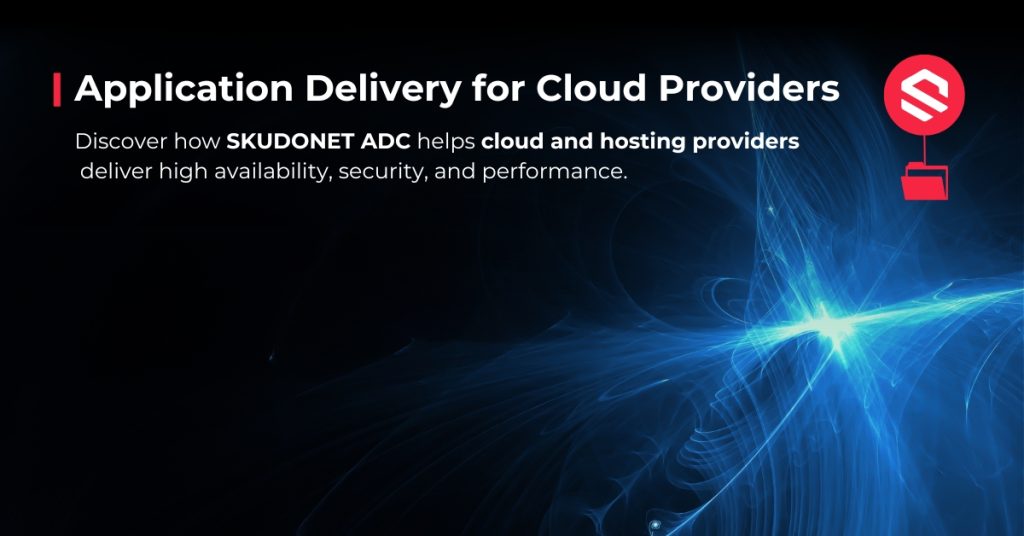Launching a cloud service used to be about uptime and bandwidth. Today, the landscape has evolved. Clients expect resilience under pressure, protection against attacks, and seamless performance—even during traffic surges or degraded conditions.
For cloud and hosting providers, delivering raw infrastructure is no longer enough. Security and availability have become essential components of a modern service offering. Providers that include these capabilities as part of their stack gain a significant edge in a competitive market.
Challenges cloud providers face today
Whether it’s a regional hosting service or a public cloud platform, most providers face similar obstacles:
- High availability is no longer optional
Delivering 99.9% uptime is not enough. Clients expect automated traffic distribution and seamless failover. In the absence of load balancing, unpredictable workloads can quickly lead to performance bottlenecks and outages. - Security threats are constant
Providers must defend against everything from L7 application attacks to DDoS floods and automated bot traffic. Without built-in Web Application Firewalls (WAFs), rate limiting, or bot filtering, vulnerabilities in one tenant can affect others—jeopardizing SLAs and brand reputation. - Cloud services are increasingly commoditized
Competing on price alone is not sustainable. Customers are placing more value on performance, manageability, and security. Features like SSL offloading, L7 routing, or integrated WAFs differentiate a provider’s offer from “just another cloud.” - Lack of native tooling
Many infrastructure providers rely on basic tools for WAF, traffic distribution, or API protection—but these are often limited in scope, difficult to customize, or not designed for complex multi-tenant environments. While cloud hyperscalers offer integrated services, unlocking advanced control or segmentation typically requires separate configurations, pricing tiers, or third-party tools. This creates fragmentation and overhead, especially for providers aiming to deliver premium services.
Why security and traffic management should be part of the core offering
Including application delivery and security capabilities directly in the infrastructure stack is a strategic advantage. It helps providers deliver:
- Stronger SLAs
Load balancing and traffic intelligence reduce downtime and improve service reliability. This makes it possible to offer higher SLAs (Service Level Agreement), which builds trust with enterprise clients. - Lower operational costs
Blocking malicious traffic before it reaches the application layer reduces emergency support tickets and unplanned intervention. ADC-level filtering helps keep the platform stable and clean. - Higher value for clients
Many customers lack the expertise or resources to configure WAFs or failover mechanisms. Offering these as built-in services improves retention by delivering out-of-the-box protection and performance. - New business models
Providers can offer tiered plans that include advanced traffic control or managed security services. These features become new sources of revenue and help move beyond simple resource resale.
Integrating advanced delivery and security features is no longer a luxury reserved for large clouds—it’s an opportunity for providers of all sizes to offer high-value services without relying solely on generic cloud-native tools. With solutions like SKUDONET, these capabilities can be tailored, isolated per tenant, and scaled with the provider’s infrastructure—whether on-premise, hybrid, or public cloud.
How SKUDONET integrates into provider infrastructures
SKUDONET Enterprise Edition is built to meet the operational and business needs of infrastructure providers—from hosting companies to public cloud platforms.
Key integration benefits:
- Flexible deployment
SKUDONET supports virtual machines, bare metal, public and private clouds, and hybrid environments. It integrates easily into existing infrastructures, without vendor lock-in. - Multi-tenancy and delegated control
Providers can create isolated environments for different clients or departments. Each tenant can have dedicated WAF policies, SSL certificates, and monitoring—ideal for MSPs or ISPs serving multiple clients from a shared platform. - Centralized control and advanced policies
The platform offers a unified console to manage L3–L7 security rules, WAF configurations, alerts, and SSL/TLS certificates. Complex tasks—like traffic throttling, cert rotation, or custom rule creation—are simplified through the UI or API. - Automation and scalability
SKUDONET supports autoscaling, clustering, and full automation via REST+JSON API. It integrates with orchestration tools like Ansible, allowing dynamic provisioning of customers, rules, or traffic routes. - Enterprise-grade support
With SLAs (Service Level Agreement) as fast as 4 hours, SKUDONET offers expert assistance during deployment, scaling, or incident response—helping providers maintain service continuity and customer satisfaction.
SKUDONET is compatible with a wide variety of infrastructure strategies. It can run as a standalone ADC on virtual machines, bare metal, or cloud instances using BYOL (Bring Your Own License) models—currently available on AWS and DigitalOcean. It’s also available as a cloud-native option via Cloud, for those who prefer managed, on-demand delivery. This flexibility makes it suitable for hosting providers, enterprise platforms, or service integrators looking for advanced capabilities without being tied to vendor-specific limitations.
Cloud and hosting providers are under pressure to deliver more than just uptime. Clients today expect performance, resilience, and built-in security from their infrastructure vendors.
By integrating a platform like SKUDONET, providers can evolve their offering from basic infrastructure to value-added service—strengthening their brand, improving customer retention, and unlocking new growth opportunities.


